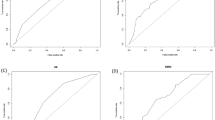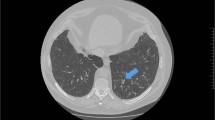Abstract
Clinical scenario
A 54 year-old man consults about a long-standing cough: his wife encouraged him to attend as she was tired of hearing him cough all the time. He is a bit vague about when it started, but it must be ‘nearly a year’. He has consulted his usual general practitioner about the cough three times. Eight months ago he presented with a ‘chesty’ cough associated with a feverish illness and an upper respiratory tract infection; he was prescribed a course of antibiotics which he thinks might have slightly improved the cough, though it did not fully resolve. Two subsequent consultations resulted in a further course of antibiotics and a trial of a salbutamol inhaler, neither of which appear to have made any difference. The clinical notes record that his chest was ‘clear’ at each of these consultations. He describes himself as ‘generally well’, though he has been tired recently which he attributes to the long hours he is working. He smoked for about 15 years but quit in his mid-thirties.
Similar content being viewed by others
This 54 year-old man has presented for the fourth time with his cough. I would go through a diagnostic algorithm for chronic cough starting with the important history and physical examination, and consideration of potential investigations. Empirical trials of therapy are frequently needed for patients in an office setting while investigations are pending,1 as chronic cough can severely affect quality of life.2
History
I would identify what risks of respiratory disease he may have, such as total cigarette pack-years, cannabis use,3 occupational exposure, infection exposure (does he have children or grandchildren in day care?), cardiac risk factors and family history. Specific symptoms which might suggest consideration of different diseases would include symptoms of dyspnoea, chest pain, fever, night sweats, weight loss, haemoptysis, reflux symptoms, throat clearing, nasal symptoms, snoring, secretions in the back of his throat, nasal congestion or rhinorrhea, loss of smell, or choking spells. A medication history is of critical importance [see Medford's perspective below].
One theory of cough is that it is mostly due to hypersensitivity, which can be provoked by many factors. Using the Hull Cough Hypersensitivity questionnaire (available from http://www.issc.info/HullCoughHypersensitivityQuestionnaire.html) may be helpful in this setting.
Physical examination
Again, I would be looking for clues that might indicate a differential diagnosis: vital signs, chest and nasal examination, cardiovascular examination, presence of clubbing or pallor, signs of pharyngitis, and oxygen saturation.
Gastro-oesophageal reflux disease,4 including gaseous, non acid reflux,5 upper airway/post nasal drip syndrome,6 and asthma,7 are by far the most common causes of chronic cough. However, consideration of other lung diseases would include chronic obstructive pulmonary disease (COPD), lung cancer,11 chronic bronchitis,8 bronchiectasis,9 eosinophillic bronchitis, chronic infections like TB or aspergillosis, inhaled foreign bodies, interstitial lung diseases,10 or sarcoidosis. Cardiac causes such as congestive heart failure, valvular abnormalities, or arrhythmias need to be considered.12 Most of these diagnoses are attainable with a few modest investigations that can be done in the primary care physician's office.
Investigations
Depending on the information from the history and examination, I would arrange investigations to confirm or refute the relevant differential diagnosis. Assuming that he is not on an angiotensin-converting enzyme (ACE) inhibitor, a CXR and spirometry would be reasonable first steps.13 If I suspected bronchiectasis or interstitial lung disease I would consider arranging a computed tomography (CT) scan of the chest. Sinus x-rays or preferably a CT scan of the sinuses might help to diagnose chronic sinusitis. Echocardiography can be done if heart failure or valvular disease is suspected. Tuberculosis (TB) is more common in low and middle income countries, [see Stacul-Fiori's perspective below], but is important not to miss when it occasionally presents in developed countries. In Canada there were 1,577 new active and re-treatment TB cases reported in 2010, an incidence rate of 4.6 per 100,000 population, the lowest number since 1924.14
Further management and empirical treatment
A normal CXR rules out many respiratory causes, and normal spirometry rules out COPD,15 but does not rule out chronic bronchitis. Asthma seems less likely in this patient due to the negative trial of salbutamol but this could be confirmed with pre- and post-bronchodilator spirometry. If doubt remains, referral for a methacholine challenge might help clarify an asthma diagnosis.
If the symptoms point to gastro-oesophageal reflux, an empirical trial of a twice daily proton pump inhibitor for acid reflux, or a prokinetic (metoclopramide or domperidone) for gaseous reflux, is a practical approach in primary care. Patients need to be advised that treatment may require several months of therapy to achieve an effect — and unfortunately, failure of therapy does not rule out reflux [see McGarvey's perspective below]. If the diagnosis is still in doubt, referral for a barium swallow, endoscopy or further investigation will be a possibility.
Referral to a respiratory specialist for further investigations such as bronchoscopy should be considered if the diagnosis continues to be unclear or if ‘red flags’ such as haemoptysis, weight loss, clubbing, unilateral wheeze, night sweats, or chest pain appear. With no firm diagnosis or response to therapy one would consider a psychogenic or habitual cough, and reluctantly even make the diagnosis of ‘unexplained cough’.16
In the meantime, patients will often request empirical treatment to relieve their symptoms. Cough suppressants are rarely useful on their own.17 With no other hints, the most common empirical treatments would be saline lavage and nasal steroids for post nasal drip syndrome.18
References
Irwin RS, Baumann MH, Boulet L-P et al. Diagnosis and management of cough: Executive summary. ACCP evidence-based clinical practice guidelines. Chest 2006;129(Suppl 1):1S–23S. http://dx.doi.org/10.1378/chest.129.1_suppl.1S
Shirai T, Mikamo M, Shishido Y, et al. Impaired cough-related quality of life in patients with controlled asthma with gastroesophageal reflux disease. Ann Allergy Asthma Immunol 2012;108:379–80. http://dx.doi.org/10.1016/j.anai.2012.02.007
Davis GP, Gunderson EW . Evaluation of chronic cough should consider cannabis use. Am Fam Physician 2012;85:680.
Irwin RS . Chronic cough due to gastroesophageal reflux disease: ACCP evidence-based clinical practice guidelines. Chest 2006;129(1 Suppl):80S–94S. http://dx.doi.org/10.1378/chest.129.1_suppl.80S
Morice AH, McGarvey L, Pavord I . Recommendations for the management of cough in adults. Thorax 2006;61(suppl 1):i1–i24. http://dx.doi.org/10.1136/thx.2006.065144
Pratter MR . Chronic upper airway cough syndrome secondary to rhinosinus diseases (previously referred to as postnasal drip syndrome): ACCP evidence-based clinical practice guidelines. Chest 2006;129(1 Suppl):63S–71S. http://dx.doi.org/10.1378/chest.129.1_suppl.63S
Dicpinigaitis PV . Chronic cough due to asthma: ACCP evidence-based clinical practice guidelines. Chest 2006;129(1 Suppl):75S–79S. http://dx.doi.org/10.1378/chest.129.1_suppl.75S
Braman SS . Chronic cough due to chronic bronchitis: ACCP evidence-based clinical practice guidelines. Chest 2006;129(1 Suppl):104S–115S. http://dx.doi.org/10.1378/chest.129.1_suppl.104S
Rosen MJ . Chronic cough due to bronchiectasis: ACCP evidence-based clinical practice guidelines. Chest 2006;129(1 Suppl):122S–31S. http://dx.doi.org/10.1378/chest.129.1_suppl.122S
Brown KK . Chronic cough due to chronic interstitial pulmonary diseases: ACCP evidence-based clinical practice guidelines. Chest 2006;129(1 Suppl):180S–185S. http://dx.doi.org/10.1378/chest.129.1_suppl.180S
Kvale PA . Chronic cough due to lung tumors: ACCP evidence-based clinical practice guidelines. Chest 2006;129(1 Suppl):147S–153S. http://dx.doi.org/10.1378/chest.129.1_suppl.147S
Prakash UB . Uncommon causes of cough: ACCP evidence-based clinical practice guidelines. Chest 2006;129(1 Suppl):206S–219S. http://dx.doi.org/10.1378/chest.129.1_suppl.206S
Madison JM, Irwin RS . Cough: a worldwide problem. Otolaryngol Clin North Am 2010;43:1–13. http://dx.doi.org/10.1016/j.otc.2009.11.001
Public Health Agency of Canada. Tuberculosis in Canada 2010. Available from www.publichealth.gc.ca (accessed June 2012)
Schermer TRJ, Quanjer PH . COPD screening in primary care: who is sick? Prim Care Respir J 2007;16(1):49–53. http://dx.doi.org/10.3132/pcrj.2007.0
Pratter MR . Unexplained (idiopathic) cough: ACCP evidence-based clinical practice guidelines. Chest 2006;129(1 Suppl):220S–221S. http://dx.doi.org/10.1378/chest.129.1_suppl.220S
Bolser DC . Cough suppressant and pharmacologic protussive therapy: ACCP evidence-based clinical practice guidelines. Chest 2006;129(1 Suppl):238S–249S. http://dx.doi.org/10.1378/chest.129.1_suppl.238S
Pratter MR . Overview of common causes of chronic cough: ACCP evidence-based clinical practice guidelines. Chest 2006;129(1 Suppl):59S–6. http://dx.doi.org/10.1378/chest.129.1_suppl.59S
Acknowledgements
Handling editor Hilary Pinnock
Author information
Authors and Affiliations
Corresponding author
Ethics declarations
Competing interests
The author declares that there are no conflicts of interest in relation to this article.
Rights and permissions
About this article
Cite this article
Kaplan, A. A 54 year-old man with a chronic cough — A primary care perspective from Canada. Prim Care Respir J 21, 342–343 (2012). https://doi.org/10.4104/pcrj.2012.00075
Received:
Accepted:
Published:
Issue Date:
DOI: https://doi.org/10.4104/pcrj.2012.00075



